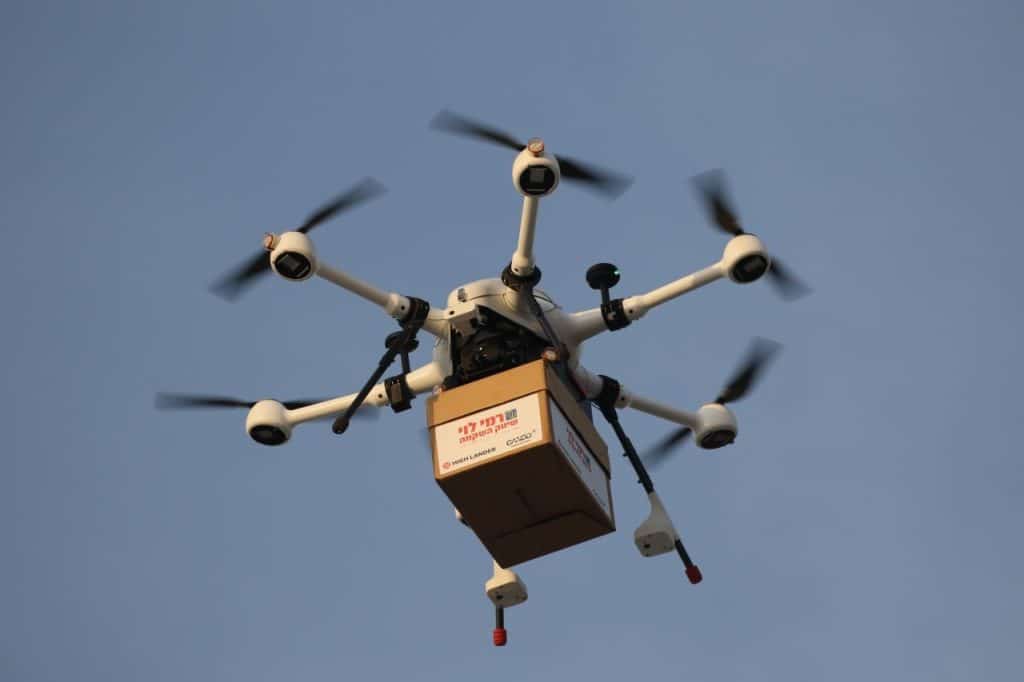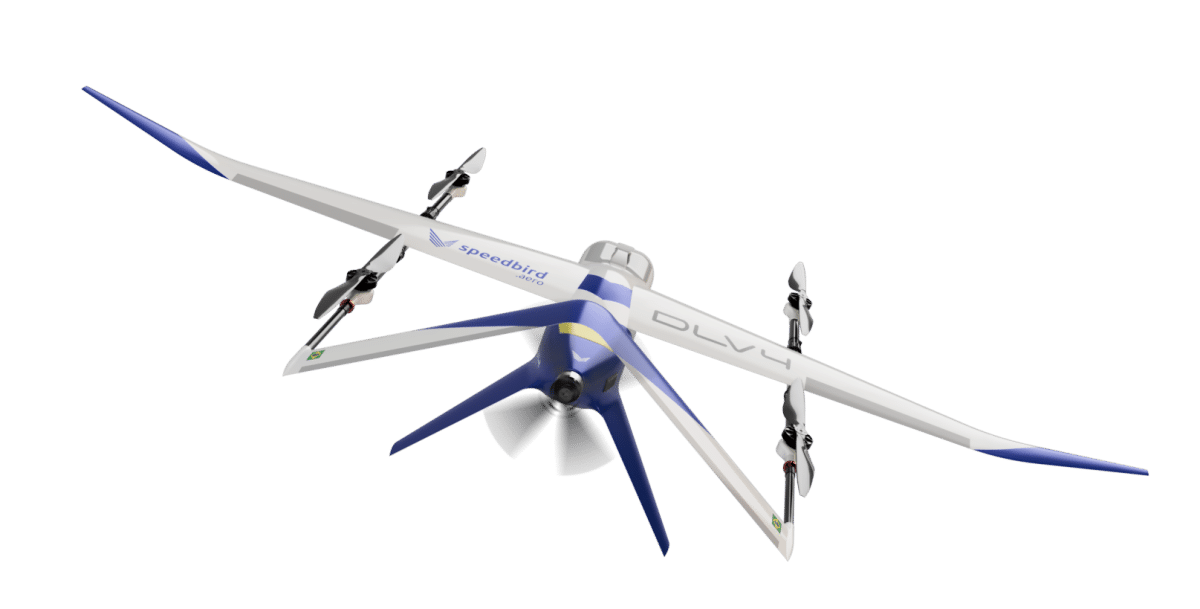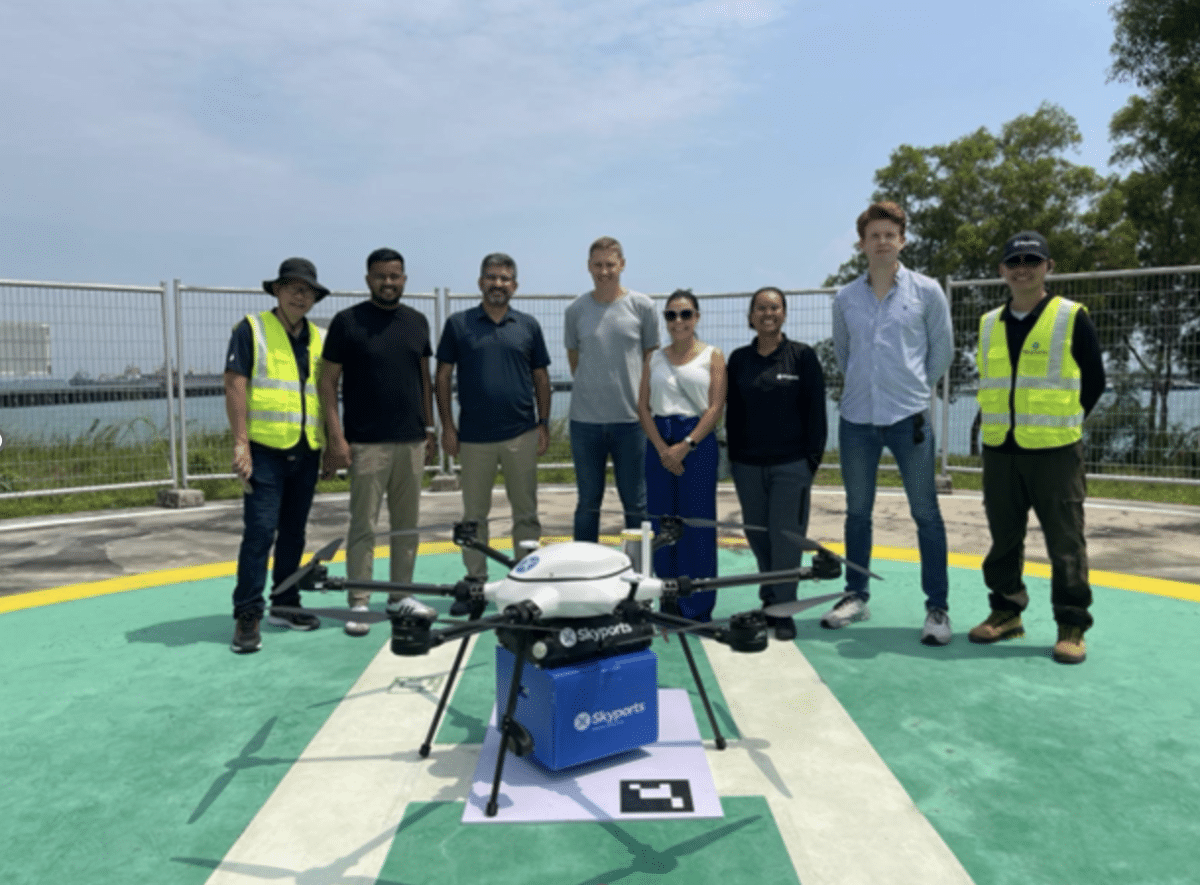Speedbird Aero Delivers a Holistic Drone Delivery Ecosystem
March 12, 2024 | Dawn Zoldi|Akshata –

Speedbird Aero, a Brazil-originated drone delivery and logistics startup, has blazed into 2024 with several new developments. In just five years, the company has significantly grown and achieved various milestones, including obtaining trailblazing certifications and approvals for beyond visual line of sight (BVLOS) operations. In a recent episode of the Dawn of Autonomy podcast, Speedbird Aero’s CEO, Manoel Coelho, discussed the company’s latest updates, which include newly developed technologies and additional industry firsts on a global scale. Read on to learn more about the evolution of Speedbird Aero’s drone delivery ecosystem.
The Hardware
With a focus on safe, innovative and efficient drone logistics, Speedbird Aero designed its aircraft systems to address various challenges across the commercial, industrial, and healthcare sectors. The company purposefully built its drone fleet, consisting of the DLV-1, DLV-2, and DLV-4 (by the way DLV stands for “delivery”) models for specific cargo weights and delivery distances. This green technology reduces CO2 emissions, eases traffic congestion and improves accessibility while otherwise contributing to society with speedy deliveries.
The DLV-1 rotorcraft, designed for urban air logistics, can carry up to 2.5 kilograms within a 3 km radius. The DLV-2, heavy lift rotorcraft for air logistics, supports payloads of up to 6 kilograms. The DLV-4 fixed wing, intended for long-range air logistics, reaches locations up to 100 km away, depending on payload. It connects cities, warehouses, hospitals, and remote areas, with capabilities for beyond visual line of sight (BVLOS) operations. The Brazilian civil aviation authority (ANAC) had previously bestowed Speedbird Aero with the country’s first type certificates for the DLV-1 and DLV-2. (This article provides a company overview). The latest update on the hardware side is that the DLV-4, primarily designed for the delivery of goods, medicines, and e-commerce orders, is just months away from achieving its own certification as well.
In Brazil, ANAC authorized Speedbird Aero to operate both day and night under favorable weather conditions, as well as beyond the operator’s visual line of sight (BVLOS). More recently, the company has increasingly employed the DLV-4 in its operations. Coehlo noted, “Our operators were used to flying multirotors, but now they are also flying eVTOLs safely. We share the data from all our daily flights directly and in real time with the regulatory bodies for tracking and to ensure transparency. Our safety record has contributed to the growing list of approvals for complex operations.”
Building that safety case requires more than just resilient and trustworthy drones equipped with redundancy systems, emergency parachutes, and navigation cameras for air navigation and precision landing; it also demands a seamless drone logistics platform. Speedbird Aero has designed its own remote operations center in Sao Paolo, where operators oversee operations to guarantee smooth functioning. It has also collaborated with Unmanned Aircraft System Traffic Management (UTM) software companies and developed its own planning software to ensure pre-defined routes, obstacle avoidance and regulatory compliance. 
The Software
Speedbird Aero crafted its hardware to be plug-and-play agnostically with others’ software. The company has also leveraged the talents of its co-founder, Samoel Salomao, to develop its very own UTM solution.
On a global scale, the company initially entered into a strategic collaboration with High Lander, an Israeli UTM developer to change global drone delivery by prioritizing safety and efficiency. High Lander’s Universal UTM solution, accredited to provide UTM services to the Israeli National Police Force, which complements Speedbird Aero’s sophisticated hardware, resulted in the first-ever drone takeoff from the Ilan and Asaf Ramon International Airport in Eilat, Israel. That flight also holds the distinction of the longest BVLOS drone delivery flight (16km) in the country. In Singapore, Speedbird works with yet another UTM provider.
Closer to home, Speedbird Aero utilizes its home-grown UTM solution and Cloud Control Station (CCS), a command and control (C2) software suite. Coelho highlighted the company’s distinctive approach. “In Brazil, we have both the manufacturer and the operator. So we created our own UTM and C2 solutions and are integrating those with the Brazilian Government.”
This software forms the technological backbone for end-to-end aircraft control and monitoring. It enhances the overall user experience, allowing operators to plan and define air corridors and predefined routes. These routes strategically connect droneports situated in key locations like cities, hospitals, warehouses and distribution centers.
The Infrastructure
Speaking of droneports, in addition to hardware, software, Speedbird Aero has developed a physical infrastructure backbone as part of its drone delivery ecosystem.
Coehlo explained that the significance of the droneport lies in ensuring a secure operation by preventing the approach of unintended entities such as children, people or animals. He described Speedbird Aero’s droneport as being similar to an airport. It serves as a critical facility to support the takeoff and landing of multiple drones from its central hub. This modular structure is designed for expandability and features one or more touchdown and lift off areas. It incorporates essential facilities such as charging stations, operation and maintenance rooms or hangars as well as weather stations. He noted, “Here in Brazil the civil aviation authority has mandated an 8×8 area for us, which is quite large.” 
The Operations and Collaborations
Over the past six years, Speedbird Aero’s hardware, software, infrastructure offerings and partnerships have enabled remote drone operations globally.
Locally, Speedbird Aero has collaborated across Latin America, with iFood, Ambev, McDonald’s and Madero. In partnership with Skyports Drone Services and the United Kingdom’s Royal Mail, Speedbird has helped launch the innovative Orkney I-Port operation, which spans three islands in the Orkney archipelago to deliver mail. The company also has launched ship-to-shore operations in Singapore, food deliveries in Israel and more.
The company’s newest first-ever for the world, however, is its innovative automated drone inspection services, focused on water quality monitoring in the U.K., in collaboration with Skyports and water supplier Northumbrian Water. Speedbird Aero’s DLV-2, equipped with specialized winch technology, flies BVLOS and lowers a highly sensitive water sensor directly into the water. The sensor sends back data in real time. This eliminates the need to return between tests. It also enables data collection from multiple locations on a single battery charge.
In another ground-breaking development, Brazil’s SENAI CIMATEC (Integrated Center of Manufacturing and Technology of the National Service for Industrial Learning) along with its Ministry of Defense and the Brazilian Air Force have entered into a Memorandum of Understanding with Speedbird Aero to partner on establishing the Bahia Aerospace Technology Park. Spanning an area of 80,000m at the Salvador Air Base, this aerospace tech park will serve as a hub for education, advanced research and innovation in the aerospace domain for the country. This initiative is anticipated to commence operations in the first half of 2025 and will address pivotal challenges in the aeronautical, space, defense, and autonomous air mobility sectors to drive forward progress and technological breakthroughs.
The Future
Speedbird Aero has established collaborations with many companies across different civil aviation authorities in multiple countries. As for the future, Speedbird is eyeing potential opportunities in Argentina and Canada, in addition to its other global operations. Speedbird Aero has a global vision, aiming to establish a significant global presence by 2030.
In the near term, you can find Coehlo at AUVSI XPONENTIAL 2024 in San Diego. Among other things, he will participate in this year’s Law-Tech Connect™ Workshop on Monday April 22nd as a panelist on the global drone regulations panel, consistent with Speedbird Aero’s dedication to advancing drone technology on a global scale while adhering to regulatory frameworks.
Until then, and assuredly well after XPO, keep a watchful eye on the skies, and in the news, for Speedbird Aero!
To learn more about Speedbird Aero’s drone delivery ecosystem, contact Speedbird Aero.
Learn more from Manoel Coelho on the 2024 Dawn of Autonomy podcast.
Register for Law-Tech Connect here: https://www.xponential.org/xponential2023/Public/Content.aspx?ID=4273
- Podcast


